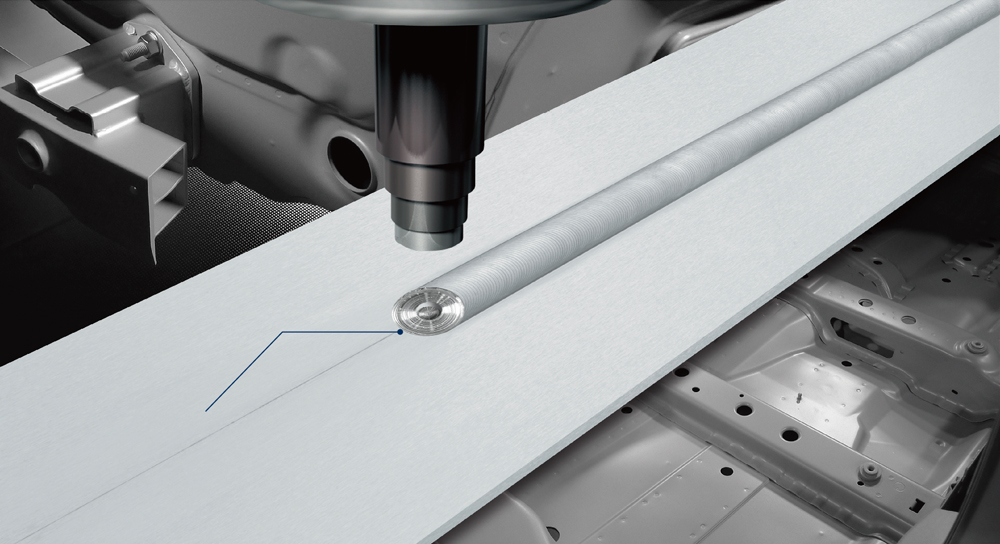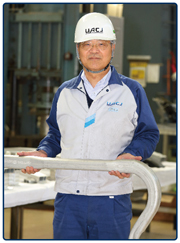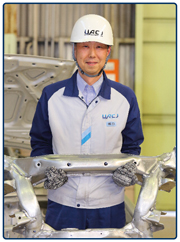
Vol.122

ALUMINUM ALLOY JOINING TECHNOLOGIES
FOR FUTURE AUTOMOBILE Aluminum Alloy Joining Technology to Create the Future Mobility
Aluminum's growing presence in the multi-materialization
Innovation by engineers researching the future of aluminum

With aluminum alloys attracting attention as a material for weight reduction, the technology for using aluminum materials in automobile manufacturing has advanced dramatically. Among them, the depth of joining technology has been remarkable, with welding such as FSW (friction stir welding) and laser welding, and mechanical joining such as riveting, screw fastening, and clinching, further expanding the range of applications for aluminum alloys. For example, tailored blanks, in which multiple materials of different thicknesses and materials are joined together and then press-formed, have become easier and more effective in reducing weight.
Along with the advancement of joining techniques, the presence and superiority of aluminum alloys will continue to expand in the trend toward multi-materials, where steel, aluminum alloys, and resins are used in the optimal parts to reduce weight.


Friction stir welding (FSW) is a joining technique that intrudes materials by rotating a cylindrical tool with a pointed tip, softening the parent metal with frictional heat, and tempering the material using the plastic flow around the joint area. UACJ provides global technical support through aluminum joining, including the development of the double-acting point joining, Friction Stir spot Welding (FSSW).
Friction Stir Welding (FSW)
A joining technique that mixes metals through plastic flow around the joint area, which can also be used to join dissimilar materials.
PROFILE
Yasuyuki Tanaka
Chief Engineer
Processing Technology Development
Research Department No. 6
R&D Devision
UACJ Corporation
PROFILE
Toshihiko Fukuda
Chief Engineer
Processing Technology Development
Research Department No. 6
R&D Devision
UACJ Corporation

The joining of aluminum alloys involves a wide range of techniques, including MIG welding and laser welding, but there is also a need to develop technologies for joining dissimilar materials. As a global manufacturer of rolled aluminum products, the Processing Technology Development Dep. conducts comprehensive evaluations of joining quality, including tensile properties, formability, and joining efficiency, to find the optimal joining method required for each component.
All information, affiliations and positions are current at the time of publication of Motor Fan Illustrated (SAN-EI Corporation Japan).






ALUMINUM DESIGN SHEET
ALUMINUM SURFACE TREATMENT